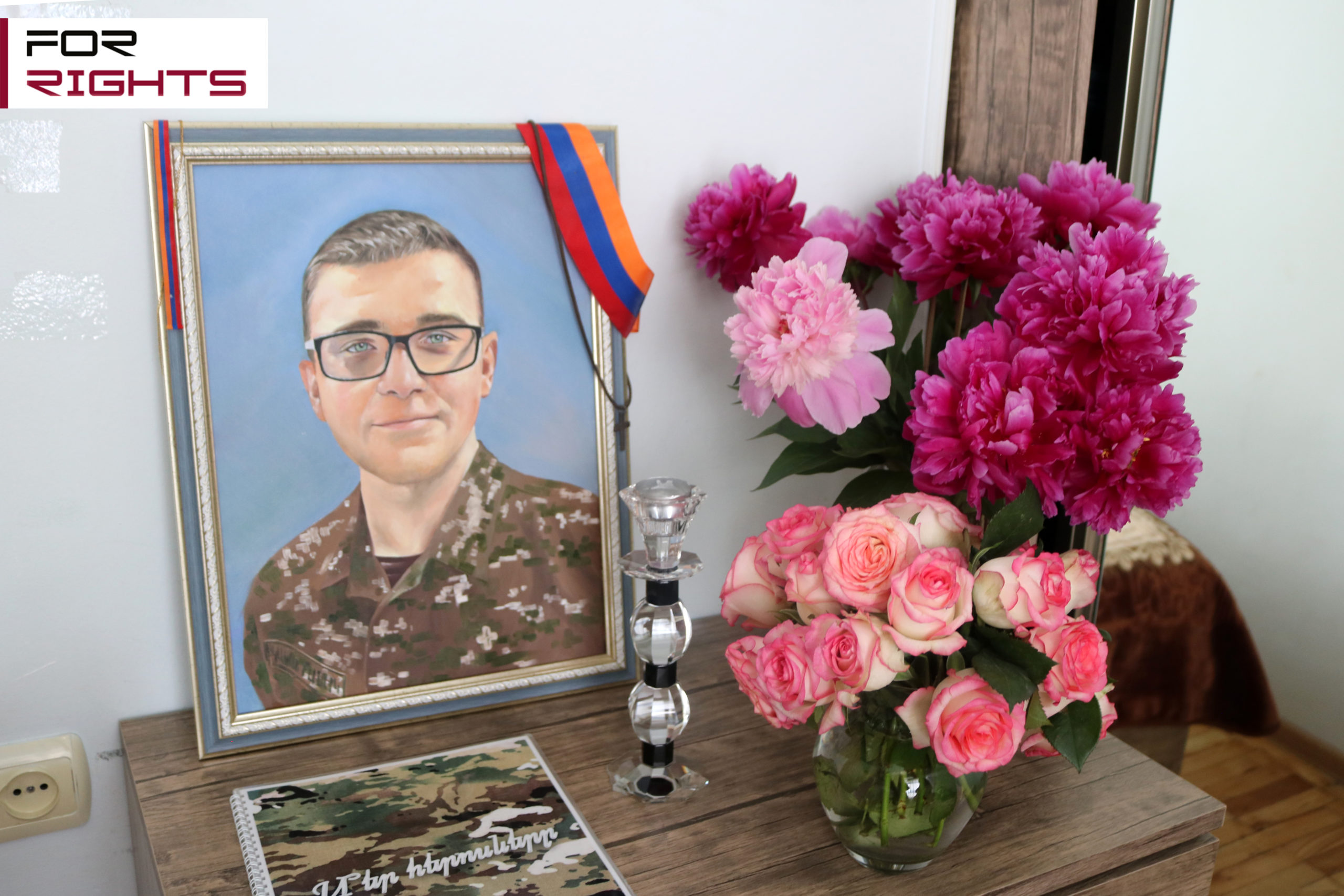Henrik Eloyan would have turned 20 years old on May 25. His mother, Mrs. Hamest, goes to Yerablur [military cemetery] every day. There are days when she tells her family that she is going to spend the night with her girlfriend, but spends the night at her son’s grave, sitting in a chair. The chair is made of wood, with traces of burning, which symbolizes how Henrik died.
During his last telephone conversation with the family, Henrik was in a good mood; he said to his mother and sister. “Behave yourselves!”
The mother of the dead soldier says that her son could have survived if it were not for the illegal order by which he, wounded, was taken to positions on October 26.
In fact, taking part in the hostilities from the very first day of the 44-day war, Henrik received a shrapnel wound in the spine on October 7 and was taken to Khndzoresk hospital. “He was in Khndzoresk hospital, then he was transferred to Sisian, then, on October 17– home. On October 23, we took him to Sisian to have surgery there, as it was dangerous to operate on him before that. On the 26th, there was an order by which my son was taken out of the hospital with an open wound and taken to positions. My son died three days later,” tells the mother.
For days, she asked for any information about her son. They said from various state structures that they did not know anything, in response to which the soldier’s mother said. “I gave birth to a boy who was 180 [centimeters] high; can I find at least a piece of him?”
Later, it became known that Henrik was killed in the blast along with 12 of his fellow servicemen. “My son was blown up twice. Once he was blown up near Kamaz [car], where he died immediately. The second time, they put my child in a car to take his body to the Stepanakert morgue… the second time he was blown up there… his body was burnt… the children were burnt… there were eight of them…”
Mrs. Hamest personally visited all the morgues in the country, opened, looked at many bags with relics, but did not find her son. On December 31, she was informed that her son’s remains were found through DNA tests. As she puts it, she received a New Year’s gift. Not trusting solely the results of a DNA test, Henrik’s mother opened the bag, examined her son’s ashes in detail, compared the teeth with the data from his dental records, and only then made sure that her son was finally found.
Hamest Vardanyan says that, even before the war, she had decided to go to his son’s military unit on her son’s birthday this year, take Henrik out for a few hours and organize a small party with the family. But things turned out differently. The family celebrated their son’s birthday in Yerablur cemetery.
Ani Gevorgyan

